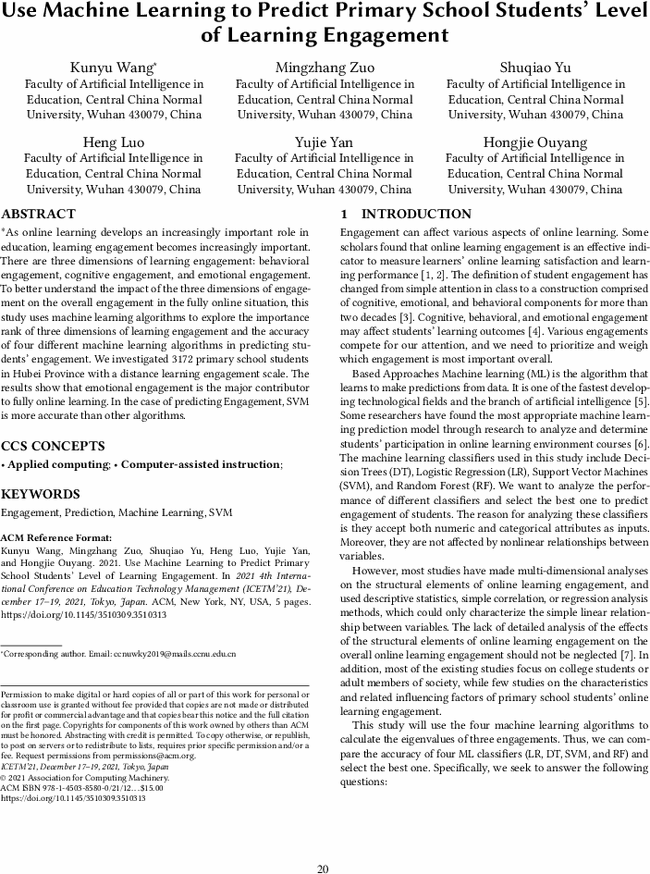Cited By
View all- Mupaikwa E(2024)Artificial Intelligence-Driven Instruction and Its Impact on Heutagogy and Student EngagementAI Algorithms and ChatGPT for Student Engagement in Online Learning10.4018/979-8-3693-4268-8.ch007(101-123)Online publication date: 14-Jun-2024
- Öztüre Yavuz GAkçapınar GÇıralı Sarıca HKoçak Usluel Y(2024)Investigating features that play a role in predicting gifted student engagement using machine learning: Video log and self-report dataEducation and Information Technologies10.1007/s10639-024-12490-9Online publication date: 8-Feb-2024
- Podder DSinha MBasu ADasgupta T(2023)Multisensory computer-based system for teaching sentence reading in Hindi and Bangla to children with dyslexiaTechnology and Disability10.3233/TAD-23000535:4(255-278)Online publication date: 27-Dec-2023




